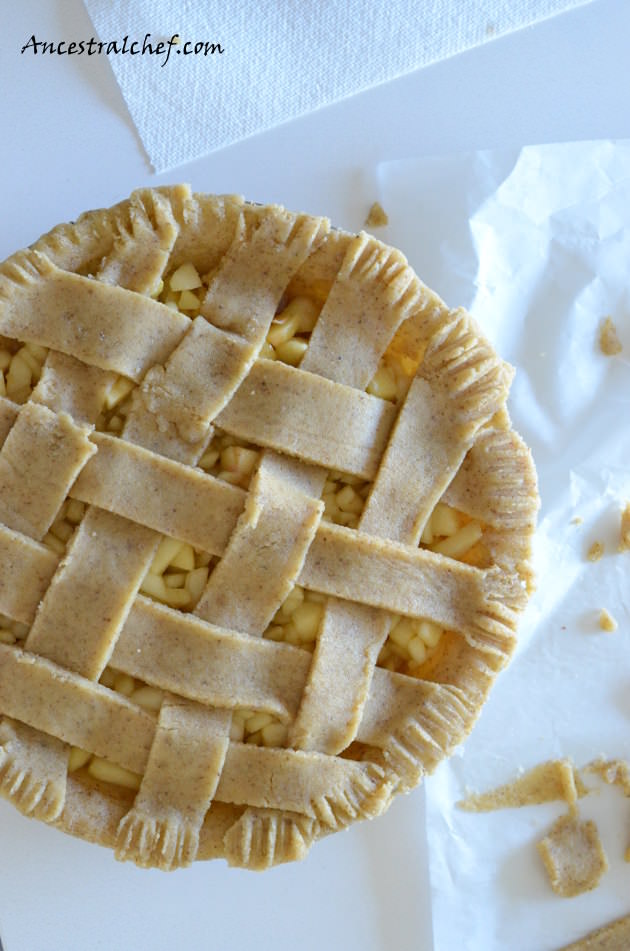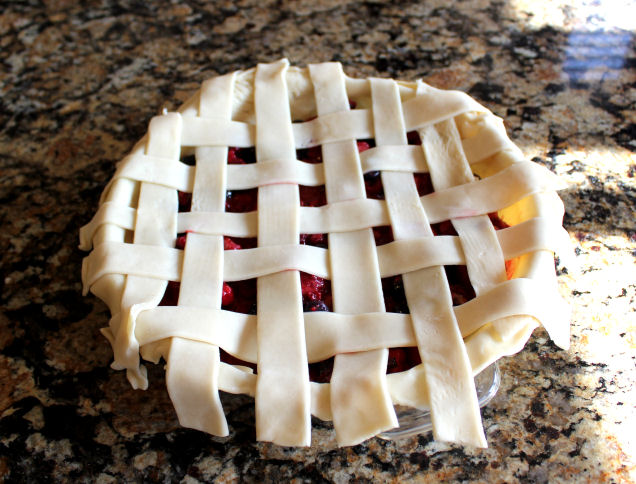

This allows the steam to escape while the pie is baking. Using a paring knife, cut 3 or 4 slits in the center of the top crust. Embellish the dough and sprinkle with sugar, if desired.

Roll the overhang over itself to create an edge. Using a sharp knife or kitchen scissors, trim the pastry, leaving a 3/4-inch overhang. Alternatively, if your dough is soft enough you can fold it in half or quarters, center it on the filling and unfold. Because most fruits shrink as they cook, don’t be surprised if the filling is a few inches above the pie dish rim.Ĭarefully slide the top crust over the filling, making sure to center it. Line a pie dish or pan with pastry dough, then pour in the filling. Technique #4: Making a Double-Crust Pie Fill the pie Use an offset spatula to release the crust from the bottom of the tart pan. To unmold a tart crust or a filled tart, carefully press the removable bottom up through the tart ring. Pies are usually served right from the pan, while tarts are typically unmolded. If filling a fully bake crust with an egg-based filling or for a tart that’s served cold, let the pastry crust cool for at least 30 minutes in the pan on a wire rack. Most recipes call for the crust to be baked again until partially baked, about 5 minutes longer, or fully baked, about 10 minutes longer. Return it to the oven, checking again every 2 minutes.Ĭarefully remove the weights and foil. If the foil sticks, the crust is not fully dried. Bake the lined crust until dry, about 15 minutes or according to your recipe.Ĭheck to see if the crust is ready by pulling up one corner of the foil. Make sure the weights cover the entire bottom of the crust. Line the dough with a large piece of heavy-duty aluminum foil, making sure to press the foil into the fluted edges of the dough.įill the foil-lined crust with pie weights, dried beans or uncooked rice. Preheat the oven to 400☏ or according to your recipe. The key is keeping the dough weighted down so it’s easy to fill later on. “Blind baking” a tart or pie is necessary when the pie filling is uncooked, or when the crust needs to bake longer than the filling. Using your index finger and thumb, pinch the dough around the rim to form a fluted edge or create another decorative edge of your choice. Roll the overhang under itself to create a high edge on the dish’s rim. If making a single-crust pie (shown here), use a small paring knife or a pair of kitchen scissors to trim the dough, leaving a 3/4-inch overhang. Gently press the dough into the bottom and up the sides of the dish, taking care not to pull or stretch it. Unroll the dough and center it in the dish. Position the rolling pin over a pie dish or pan. Dust the surface and the rolling pin with flour as needed.Ĭarefully roll the dough around the rolling pin, brushing off the excess flour with a pastry brush. Using a bench scraper or an offset spatula, lift and turn the dough several times as you roll to prevent sticking. Rolling from the center toward the edges and in all directions, roll the dough into a round 2 to 3 inches larger than your pie dish or pan. Lightly dust a work surface, the dough and the rolling pin with flour. Rolling out dough and creating a neat, beautiful edge is simple-just make sure to keep your surface lightly dusted with just enough flour to keep it from sticking. Wrap well in plastic wrap and refrigerate for at least 1 hour or up to overnight.

Transfer the dough to a floured work surface. Don’t overmix, or the crust will be tough. When the dough is done, it should come together in a rough mass in the food processor bowl but not form a ball. If the dough crumbles, add more ice water, a tablespoon at a time, and pulse just until the dough holds together when pinched. To test the pie dough, stop the food processor and squeeze a piece of dough. At this point, some of the butter pieces should be blended into the flour, but bits the size of peas should still be visible.Īdd the ice water and pulse the machine 10 to 12 times. Using a sharp knife, cut the butter into 3/4-inch cubes and add them to the work bowl. Pulse the machine 2 or 3 times to mix the ingredients evenly. Add the flour, sugar and salt to the work bowl. Process the dry ingredientsįit a food processor with the metal blade. To keep it light and crispy, avoid overworking the dough. Read on to master the techniques, then scroll down for some of our favorite recipes for the season.Ĭold butter produces a pie pastry that’s versatile and delicious, creating flaky layers in the crust. In honor of our favorite time to bake, we’ve pulled together everything you need to know about making a classic pie, with foolproof step-by-step tips for every part of the process, from mixing the dough to creating a beautiful lattice top.


 0 kommentar(er)
0 kommentar(er)
